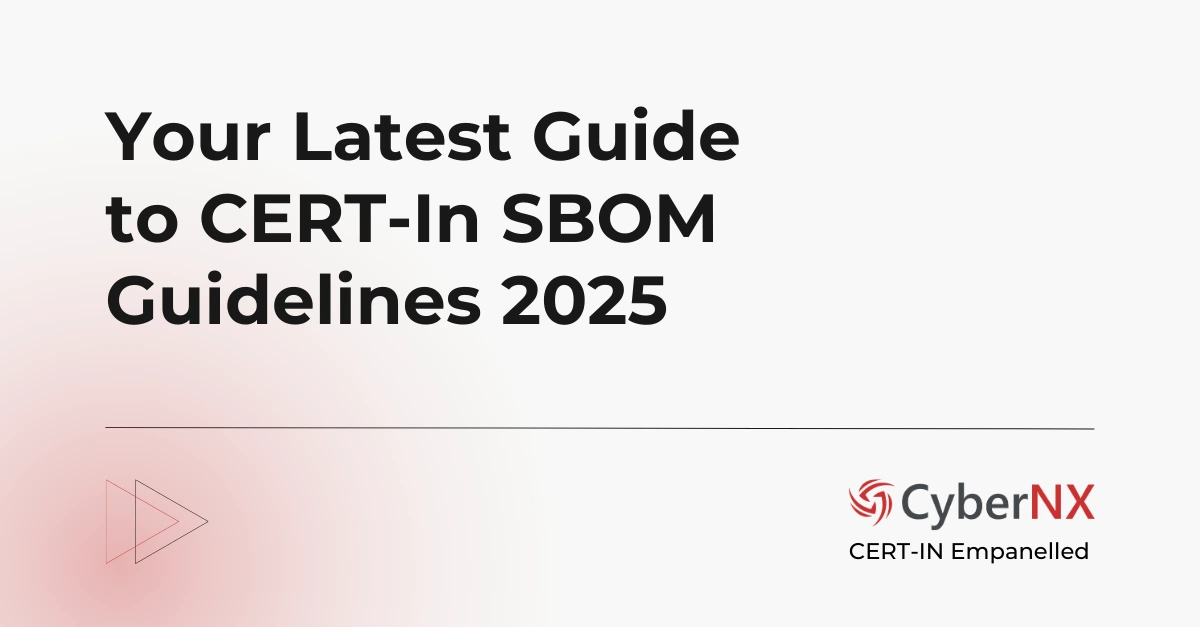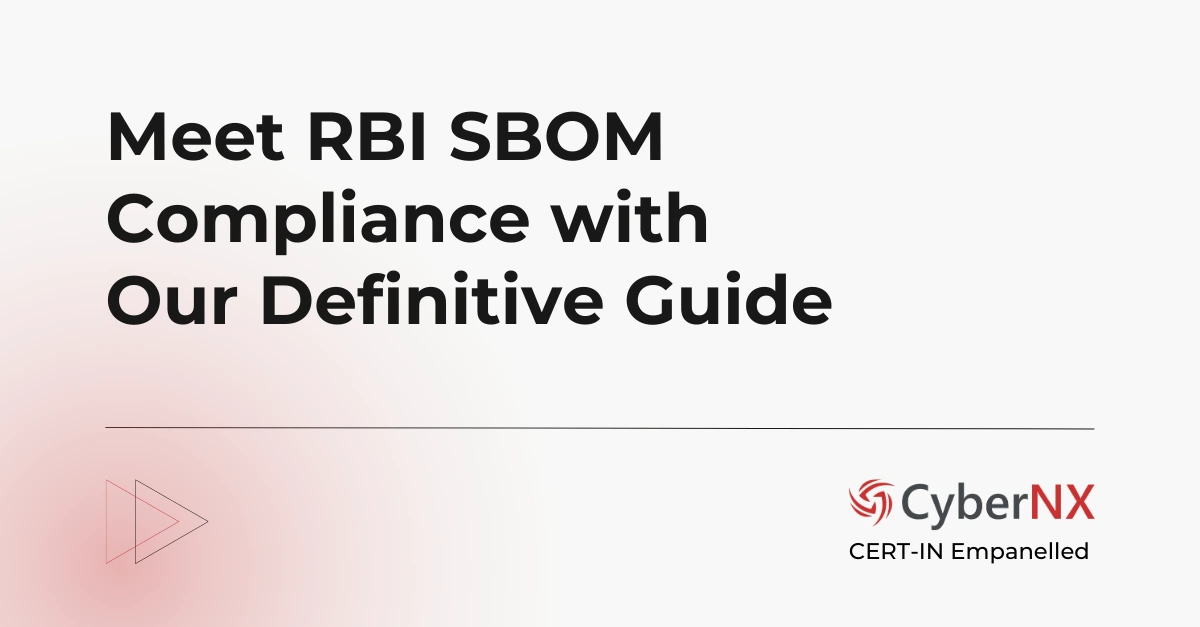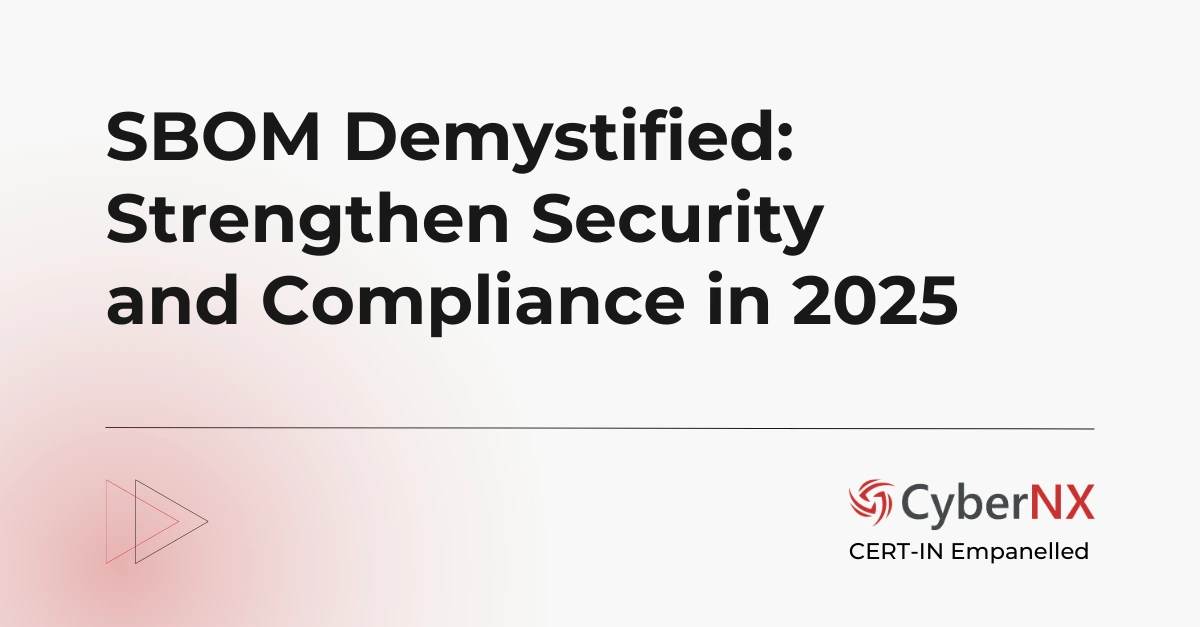Software supply chain attacks have increased exponentially in the recent times. This is the reason why regulatory mandates like SBOM requirement of SEBI CSCRF, RBI and CERT-In are essential. SBOMs help organizations gain deep visibility into the components used in software, enabling better vulnerability management, regulatory compliance, and risk mitigation.
As demand for SBOMs grows, so does the number of SBOM tools designed to automate and streamline their generation. In this blog, we spotlight the top 5 SBOM generation tools in 2025.
1. NXHawk by CyberNX
Purpose-built for SBOM Management | CSCRF-RBI Compliance | End-to-End Monitoring
NXHawk is a cutting-edge SBOM generation and compliance tool developed by CyberNX, tailored to meet the specific needs of financial institutions and market infrastructure entities under SEBI’s Cybersecurity and Cyber Resilience Framework (CSCRF).
Key Features
Find the key features of the CyberNX SBOM tool:
- Automated SBOM Generation: Generates SBOMs during software deployment and updates.
- Compliance-Ready Format: Outputs SBOMs with detailed metadata (licenses, hashes, encryption, access control, etc.
- Legacy System Support: Offers exception handling workflows for proprietary and legacy applications.
- Continuous Monitoring: Tracks SBOM changes over time and links to vulnerability databases for alerts.
- One Time Generation / Continuous Monitoring: Easily embeds SBOM checks into vendor evaluation and contract management.
Why CyberNX Stands Out
Unlike generic SBOM tools, NXHawk is designed with regulatory alignment in mind, helping REs not only generate SBOMs but monitor, manage, and audit them continuously. With CyberNX’s support and domain expertise, NXHawk is the go-to choice for generating and managing SBOMs.
2. Syft by Anchore
Open-Source | Developer-Friendly | Container Focused
Syft is a popular open-source SBOM generator built by Anchore. It excels in scanning container images, file systems, and codebases to create SBOMs in multiple standard formats (CycloneDX, SPDX, JSON).
Key Features
Some of the key features of this SBOM tool include:
- Fast CLI-based generation
- Supports Docker, OCI images, and filesystems
- Integrates well with CI/CD pipelines
- Outputs SPDX and CycloneDX formats
This is good for DevOps teams looking for a lightweight, scriptable SBOM tool for containerized applications.
3. Microsoft SBOM Tool
Enterprise-Grade | Trusted by Azure Ecosystem | SPDX Standard
Microsoft’s SBOM Tool is a command-line utility that helps developers generate SBOMs using the SPDX 2.2 specification. It’s designed to integrate into Microsoft’s development ecosystem but works across environments.
Key Features
Some of the key features of this SBOM tool include:
- Ideal for .NET and Azure DevOps projects
- SPDX-compliant output
- Works across Linux, Windows, and macOS
- GitHub integration available
It is best for enterprises invested in the Microsoft ecosystem needing SBOMs for audit and security reviews.
4. CycloneDX CLI by OWASP
Security-Centric | Actively Maintained | Community-Driven
CycloneDX is not just a tool—it’s an entire SBOM standard supported by the OWASP Foundation. Its CLI tool allows developers to generate SBOMs in a format that prioritizes security and threat modelling.
Key Features
Some of the key features of this SBOM tool include:
- Detailed dependency tracking (including transitive)
- Designed for software and hardware BOMs
- Strong community and OWASP backing
- Compatible with multiple build tools
It is best for organizations focused on security-first SBOM generation and who want to contribute to open standards.
5. FOSSA SBOM Manager
Commercial Tool | License Compliance + Vulnerability Scanning
FOSSA is a SaaS platform that provides SBOM generation, license management, and vulnerability detection—all in one. It integrates directly into Git repositories and CI pipelines.
Key Features
Some of the key features of this SBOM tool include:
- Automated SBOMs as part of CI/CD
- Tracks open-source license compliance
- Links directly to vulnerability databases (CVEs)
- Enterprise dashboards and audit trails
It is best for large enterprises with complex open-source usage who need robust compliance and security workflows.
Conclusion
Whether you’re a developer, CISO, or compliance officer, choosing the right SBOM tool can make a big difference in your ability to detect vulnerabilities, meet compliance standards, and manage software risks. Our advanced tool NXHawk along with SBOM services ensure that you’re not just generating SBOMs—but managing them for
long-term resilience and audit-readiness.
SBOM Tools FAQs
Can SBOM tools detect vulnerabilities automatically, or do they rely on third-party databases?
Most SBOM tools don’t detect vulnerabilities directly. Instead, they generate an inventory of software components and link them to third-party vulnerability databases like the NVD (National Vulnerability Database) or GitHub Security Advisories to flag known CVEs. Some tools, like FOSSA and NXHawk, integrate this step seamlessly for real-time alerts.
How do SBOM tools handle proprietary or closed-source components?
Handling proprietary components is a challenge for many SBOM tools. Advanced tools like NXHawk provide exception workflows and allow manual entry of metadata, such as licenses and component origin, for legacy or proprietary systems that lack conventional SBOM support.
Is SBOM generation a one-time task or a continuous process?
While SBOMs can be generated once during a software release, best practices—and emerging regulations—recommend continuous SBOM generation and monitoring. This ensures visibility as new dependencies are introduced or vulnerabilities emerge, making continuous tools more future proof.
How do SBOM tools integrate with CI/CD pipelines?
Modern SBOM tools offer command-line interfaces or APIs that integrate directly into CI/CD pipelines. This allows automatic SBOM generation during each build or deployment, reducing manual effort and ensuring updated component tracking across releases.





